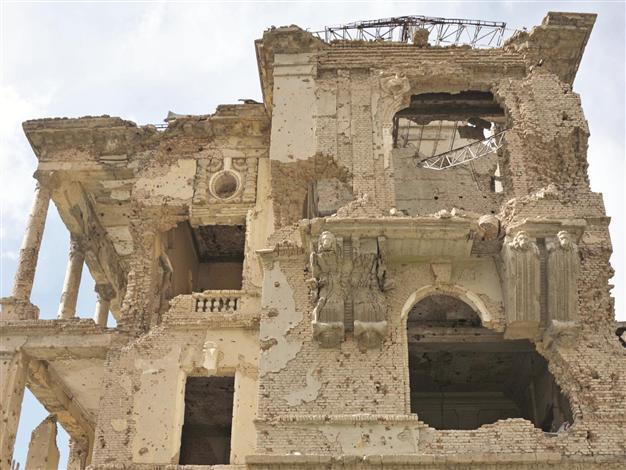Afghanistan focuses on Buddhist heritage
KABUL - Agence France-Presse

This file photo shows a general view of the damaged remains of the Darul Aman palace in Kabul, Afghanistan.
Afghanistan, which achieved global notoriety for cultural barbarism when the Taliban blew up the ancient Bamiyan Buddhas, this week opened an exhibition highlighting the country’s rich Buddhist heritage.In sharp contrast to the religious intolerance behind the destruction of the Buddhas 11 years ago, the immaculate exhibition is on display in the National Museum, itself rebuilt with international aid after being destroyed by civil war.
Overlooked by living history represented by the ruins of the neoclassical Darulaman Palace on a neighbouring hill -- also a victim of war -- the interior of the museum is a sanctuary of quiet arches and marble floors in a violent land.
In the entrance hall is a replica of the Great Buddha of Bamiyan, one of two giant standing statues carved into Bamiyan cliffs in Afghanistan’s central highlands in the sixth century.
But the polyurethane copy is a poor substitute -- unlike the surviving treasures dating from the second century AD that dedicated museum staff managed to hide and protect through 30 years of conflict and turmoil. One statue shows a lean-torsoed Buddha, reflecting the art of the ancient Greeks introduced by Alexander the Great, who staged one of the many invasions of Afghanistan over the centuries, said museum curator Surkh Kotal.
Others show damage inflicted by Taliban fanatics who destroyed many of the museum’s artefacts before their regime was overthrown by US-led troops in 2001 for harbouring Al-Qaeda leader Osama bin Laden. Among the items spared -- many hidden in secret vaults outside the museum -- are relief carvings depicting the Buddha’s life and other artefacts from former Buddhist monasteries in Afghanistan, mainly south of the Hindu Kush mountains. One of those behind the protection of the treasures is museum director Omarakhan Massoudi, who joined the museum 34 years ago.
“I’m happy we preserved some masterpieces through a difficult time in our country,” Massoudi told AFP, recounting how a decision was made to move major works to secret locations in 1989 as Soviet forces withdrew and civil war loomed.
















